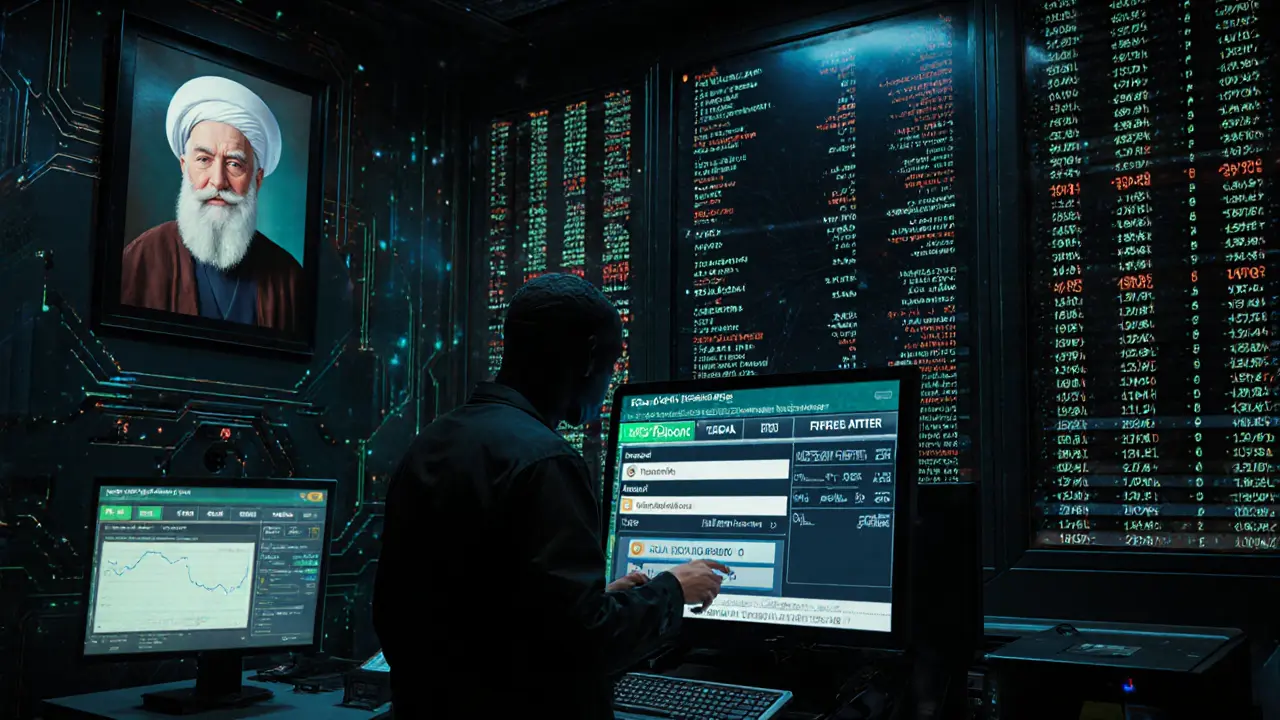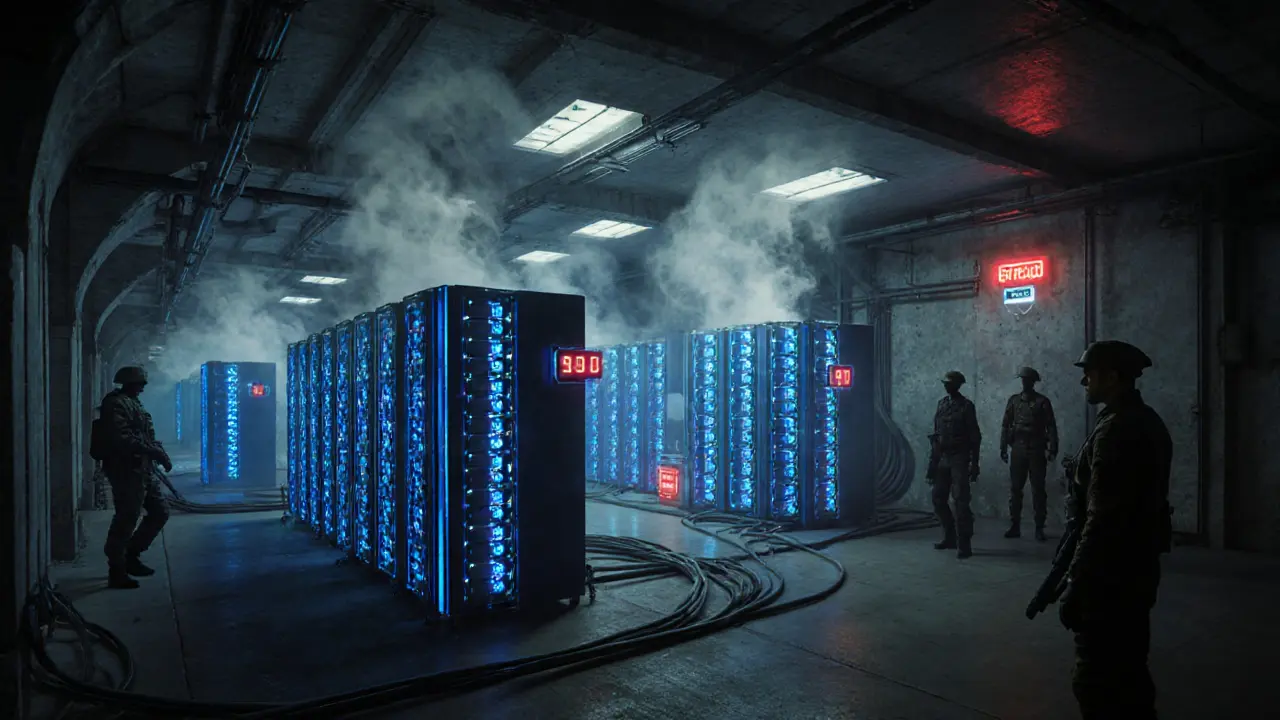Iran Mining Profit Calculator
Mining Calculator
Important Note: The IRGC-controlled mining operations in Iran use electricity rates over 1,750x cheaper than regular rates (0.004¢ vs 7¢ per kWh), creating an enormous profit advantage. This subsidy is made possible through state-controlled power grids and military backing.
Iran doesn’t just allow cryptocurrency mining-it controls it. While most countries either ban crypto mining or leave it to private companies, Iran has turned it into a state-run operation, with powerful military and political groups using cheap electricity to mine Bitcoin and other coins-and turning the profits into hard currency outside the reach of U.S. sanctions.
How It Started: A Legal Loophole Turned Lifeline
In July 2018, Iran officially legalized cryptocurrency mining. At the time, the country was already struggling under crippling sanctions that blocked its access to global banking. Banks wouldn’t process transactions. Foreign currency was nearly impossible to obtain. The government needed a way to earn dollars without touching the traditional financial system. Crypto mining became the answer. The Central Bank of Iran even began exploring its own digital currency, a rial-backed token meant to replace foreign cash. But the real action wasn’t in government labs-it was in warehouses, military bases, and even under sports stadiums, where massive mining rigs hummed day and night, powered by electricity that cost less than a penny per kilowatt-hour. By 2020, Iranians were trading between $16 million and $20 million in crypto every day. Bitcoin mining alone was generating around $1 billion in annual value. The numbers kept climbing. And the people running the biggest operations weren’t hobbyists or startups-they were the Islamic Revolutionary Guard Corps (IRGC) and other entities loyal to Supreme Leader Ali Khamenei.The Mining Machines: ASICs, Power, and Hidden Factories
Crypto mining in Iran isn’t done on home PCs. It’s industrial. Thousands of ASIC miners-specialized computers built only for mining Bitcoin-are stacked in rows, consuming massive amounts of electricity. One known facility in Rafsanjan, Kerman province, uses 175 megawatts of power. That’s enough to power a small city. And it’s just one of many. The total mining capacity in Iran is estimated to be over 1,000 megawatts. For comparison, that’s more than the entire country of Norway was using for crypto mining at its peak. The secret? Electricity subsidies. While average Iranians pay around 7 cents per kWh for legal mining, the IRGC and its partners pay as little as 0.004 cents per kWh-practically free. These operations aren’t always obvious. In Ahvaz, a mining farm was hidden for over two years beneath a sports complex, tucked into tunnels under a cycling track and inside service rooms disguised as electrical rooms. When authorities finally discovered it, they found 2,000 mining rigs running nonstop, siphoning power meant for hospitals and homes.The Energy Crisis No One Talks About
Iran is one of the most energy-intensive countries in the world, and crypto mining is making it worse. Power outages have become routine-especially in summer, when temperatures hit 45°C and families need air conditioning. In Tehran’s District 3, blackouts lasted 14 hours during peak heat in 2024. Meanwhile, mining farms connected to the IRGC kept running. Social media is full of angry posts: #IranEnergyCrisis trends every time the lights go out. Reddit threads from Iranian users describe factories shutting down because of rationing, while nearby mining sites operate without interruption. People are furious. They’re paying higher bills, losing work hours, and even risking health during heatwaves-all while the regime mines Bitcoin. The government blames “unlicensed” miners for the outages. But investigations show the biggest users are the ones with political protection. Legal miners get their power cut during peak hours. The IRGC’s mines? They never blink.
Regulation on Paper, Privilege in Practice
As of 2025, Iran has rules for crypto mining. You need a license from the Ministry of Industry, Mine and Trade. You must use government-approved hardware. You pay a set electricity rate. You can’t advertise crypto. And now, you pay capital gains tax on profits. But the rules don’t apply to everyone. The licensing process takes 6-8 weeks. The approved hardware is slower and less efficient than what’s available overseas, cutting mining output by 15-20%. For private operators, it’s a nightmare. For IRGC-linked operations? They bypass it all. They get cheaper power. They use better machines. They’re never audited. The Central Bank even blocked all cryptocurrency-to-rial payment gateways in December 2024, claiming exchanges were unregulated and tax-free. Then, in January 2025, they partially reopened them-but only if exchanges gave the government full access to user data. In effect, legal crypto became a surveillance tool.Sanctions Evasion: The Real Goal
Why does Iran care so much about crypto? It’s not about technology. It’s about survival. U.S. sanctions cut Iran off from SWIFT, blocked its oil exports, and froze its foreign reserves. But crypto doesn’t need banks. Bitcoin and stablecoins like USDT can move across borders without permission. The IRGC mines Bitcoin, sells it on exchanges like Nobitex, converts it to USDT, and then uses peer-to-peer networks to trade it for dollars, euros, or gold. In July 2025, Tether-the company behind USDT-froze 42 Iranian-linked addresses in the largest-ever action against crypto tied to Iran. The addresses were linked to IRGC-affiliated wallets and Iran’s biggest exchange. The move disrupted a key pipeline of sanctioned cash. Iran responded fast. The government pushed citizens to switch from USDT to DAI, a stablecoin built on the Polygon network, hoping to avoid future freezes. They’re adapting. They’re learning. And they’re not stopping.
The Future: Tax, Control, or Collapse?
Iran’s crypto strategy is a paradox. The regime wants to tax it. It wants to control it. It wants to use it to bypass sanctions. But it also wants to stop citizens from fleeing the country with their savings. The August 2025 “Law on Taxation of Speculation and Profiteering” officially put crypto on par with gold and real estate. Now, profits are taxed. But enforcement is weak. Only those without protection pay. The Central Bank’s digital rial project is still in development. But it’s not meant to replace Bitcoin-it’s meant to replace the need for Bitcoin. A state-controlled digital currency gives the government full visibility and control. No anonymity. No foreign access. No sanctions evasion. But will it work? Probably not. Iranians already trust crypto more than their own currency. Inflation is over 40%. The rial is losing value daily. People use crypto not because they love blockchain-they use it because it’s the only thing keeping their savings alive.What This Means for the Rest of the World
Iran is the only country where crypto mining is a tool of national security. It’s not a fringe activity. It’s a pillar of the economy. And it’s working-despite sanctions, despite blackouts, despite international crackdowns. Other nations might look at Iran and think: “That’s dangerous.” But they’re also watching. If a sanctioned country can mine its way out of financial isolation, what’s stopping others? Venezuela tried. Russia has hinted at it. North Korea already does it illegally. Iran’s model shows how crypto can undermine traditional financial control. And it shows how state power can twist technology to serve its own ends-no matter the cost to its people.Is crypto mining legal in Iran?
Yes, but only under strict government rules. Legal mining requires a license, approved hardware, and payment of a set electricity rate. However, state-affiliated groups like the IRGC operate outside these rules, using subsidized power and avoiding oversight. Most private miners face heavy restrictions, while the regime’s operations run unchecked.
How does Iran use crypto to bypass sanctions?
Iran mines Bitcoin and other cryptocurrencies using cheap, state-subsidized electricity. These coins are sold on domestic exchanges like Nobitex, converted into stablecoins like USDT, and then traded peer-to-peer for dollars, euros, or gold outside the traditional banking system. This bypasses SWIFT, U.S. banking restrictions, and asset freezes. The profits fund military and political operations that can’t access global finance.
Why is electricity so cheap for crypto mining in Iran?
The Iranian government heavily subsidizes electricity for strategic industries, including mining. While legal miners pay about 7 cents per kWh, IRGC-linked operations pay as little as 0.004 cents per kWh-roughly 1/50th of global commercial rates. This is possible because these operations are tied to state security forces and receive direct power feeds from military or government-controlled grids.
What happened in July 2025 with Tether’s freeze?
Tether froze 42 cryptocurrency addresses linked to Iranian entities, including wallets connected to Nobitex and the IRGC. This was the largest-ever freeze targeting Iran and disrupted a major channel for converting mined crypto into usable foreign currency. In response, Iran pushed users to switch from USDT to DAI on the Polygon network to avoid future freezes and maintain access to liquid assets.
Are Iranians against crypto mining?
Many Iranians are angry about it-not because they oppose crypto, but because they see it as a tool of corruption. Power outages are common, especially during heatwaves, and citizens blame unregulated mining for draining the grid. Meanwhile, the IRGC and its allies continue operating without consequences. Public outrage has grown, especially after discoveries like the mining farm hidden under a sports stadium in Ahvaz.




